Description
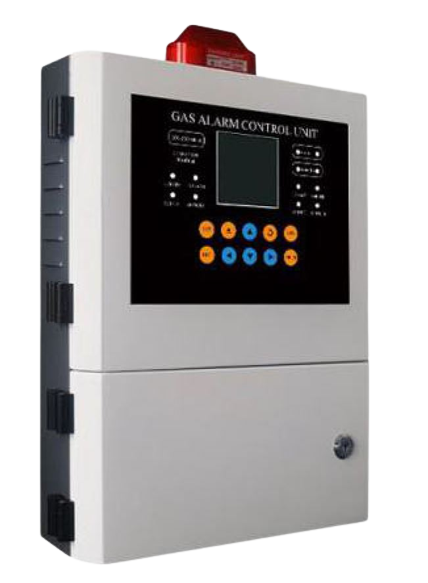 Gas Alarm Control Panels: An In-Depth Overview
Gas Alarm Control Panels: An In-Depth Overview
The Gas alarm control panel is critical components in safety systems designed to detect, monitor, and alert occupants to the presence of hazardous gases. Also, these panels play a vital role in protecting people, property, and processes in environments where gas leaks or concentrations of toxic, flammable, or asphyxiating gases could pose serious risks. Understanding the functionality, components, installation, and maintenance of gas alarm control panels is essential for ensuring their effective operation and reliability.
Understanding Gas Alarm Control Panels
Gas alarm control panels serve as the central hub of a gas detection system. Furthermore, they receive data from various gas detectors placed throughout a facility, analyze this data, and trigger alarms or other responses based on predetermined thresholds. In addition, these panels are crucial for detecting gases such as carbon monoxide (CO), methane (CH4), hydrogen sulfide (H2S), ammonia (NH3), and many others. Finally, the panels ensure timely alerts and prompt actions, which are essential for safety in industrial plants, laboratories, commercial buildings, and other environments.
Components of Gas Alarm Control Panels
Control Unit: The heart of the gas alarm control panel, the control unit processes signals from gas detectors and determines whether the gas concentrations exceed safe levels. Finally, it is responsible for managing the system’s overall operation, including alarm thresholds, data logging, and communication with external systems.
Gas Detectors: These sensors, placed at various points in the monitored area, detect the presence of specific gases. In addition, each type of gas detector is designed to respond to different gases using various sensing technologies, including electrochemical cells, catalytic beads, infrared sensors, and metal oxide semiconductors.
Display and Indicators: Gas alarm control panels typically include a display screen that shows real-time data, alarm status, and system information. Visual indicators such as LEDs or LCD screens provide immediate feedback on the system’s status and any detected alarms.
Alarms and Notifications: The panel is equipped with audible alarms (horns or sirens) and visual alarms (flashing lights) to alert personnel to dangerous gas levels. Finally, it may also have communication outputs for notifying external systems, such as building management systems or emergency response teams.
Control and Communication Interfaces: These interfaces allow users to interact with the control panel, configure settings, and access data. Common interfaces include keypads, touch screens, and computer-based software. Communication interfaces enable integration with other safety systems and remote monitoring capabilities.
Power Supply: The control panel requires a reliable power source to function correctly. Many panels have backup batteries to ensure operation during power outages. Power management systems may include features like battery status monitoring and automatic switchover to backup power.
Functionality of Gas Alarm Control Panels
Gas Detection: Gas detectors connected to the control panel continuously monitor the environment for the presence of hazardous gases. They send real-time data to the control panel, which evaluates the information against preset alarm thresholds.
Alarm Activation: When the gas concentration exceeds a predefined level, the control panel triggers alarms. In addition, these alarms may vary in severity, including pre-alarm (alerting users to rising gas levels) and full alarm (indicating dangerous levels). The panel activates audible and visual signals to ensure occupants are aware of the danger.
Data Logging: Modern gas alarm control panels often include data logging capabilities. They record gas levels, alarm events, and system status, providing valuable information for analysis, compliance reporting, and troubleshooting.
System Integration: Gas alarm control panels can integrate with other building systems, such as fire alarms, HVAC systems, and emergency shutdown systems. Integration ensures a coordinated response in emergencies, such as activating ventilation systems or shutting down gas supplies.
Remote Monitoring and Control: Many gas alarm control panels offer remote monitoring and control capabilities through network connections. In addition, this feature allows operators to access system data, configure settings, and manage alarms from a remote location, enhancing flexibility and response times.
Installation of Gas Alarm Control Panels
Site Assessment: Before installation, conduct a thorough site assessment to determine the optimal locations for gas detectors and the control panel. In addition, consider factors such as potential gas leak sources, airflow patterns, and accessibility for maintenance.
Mounting the Control Panel: Install the control panel in a secure and accessible location. It should be mounted at a height that allows easy operation and visibility of the display and indicators. Ensure the panel is protected from environmental conditions that could affect its performance.
Connecting Gas Detectors: Connect gas detectors to the control panel using the appropriate wiring or communication protocols. In addition, follow the manufacturer’s guidelines for wiring diagrams, connections, and calibration.
Power Supply Connection: Connect the control panel to a reliable power source, including any backup power systems. Verify that the power supply meets the specifications required by the panel and ensure proper grounding.
System Testing: After installation, perform thorough testing of the gas alarm control panel. Test each gas detector to ensure proper operation and communication with the control panel. Verify that alarms activate correctly and that data logging functions are operational.
Calibration: Calibrate the gas detectors according to the manufacturer’s instructions. Calibration ensures accurate detection and measurement of gas concentrations, which is crucial for effective safety management.
Maintenance and Calibration
Regular Inspections: Schedule regular inspections of the gas alarm control panel and associated detectors. Check for any signs of damage, wear, or malfunction. In addition, ensure that all components are functioning correctly, and that the system is operating as expected.
Detector Maintenance: Clean and maintain gas detectors according to the manufacturer’s recommendations. In addition, replace filters or other consumable parts as needed. Ensure that detectors remain free of dust, moisture, or other contaminants that could affect their performance.
Calibration: Perform routine calibration of gas detectors to maintain accuracy. In addition, follow the calibration procedures outlined by the manufacturer and use certified calibration gases. Document all calibration activities for reference and compliance purposes.
Software Updates: If the control panel includes software or firmware, check for updates regularly. Install updates as needed to ensure that the system benefits from the latest features and security improvements.
Record Keeping: Maintain detailed records of maintenance activities, inspections, and calibrations. Keep track of any issues encountered and actions taken. In addition, this documentation is essential for compliance and for troubleshooting potential problems.
Compliance and Regulations
Gas alarm control panels must comply with various industry standards and regulations, including those set by organizations such as the National Fire Protection Association (NFPA), the Occupational Safety and Health Administration (OSHA), and international standards like ISO. Compliance ensures that the system meets safety requirements and operates effectively in emergency situations.
Conclusion
Gas alarm control panels are integral to safety systems designed to protect people and property from hazardous gases. By understanding their components, functionality, installation, and maintenance, users can ensure that these panels provide reliable and accurate monitoring of gas concentrations. Regular maintenance, calibration, and adherence to regulations are crucial for the effective operation of gas alarm control panels, contributing to a safer environment and enhanced safety management in various applications.
Specifications
Display type: LCD
Output signal: RS485
Input signal: 4-20mA
Connection mode: Three-wire system
Alarm volume: ≥80db
Using environment: -20℃~50℃ (0-95)%RH
Power supply: 110v-220V(50-60HZ)
Product weight: 3.0Kg
Way to install: Wall mounting(non-explosion-proof place)
Support channel: 1-4 Unit (s)
Alarm type: Sound and light+Indicator light alarm
Product size: 330mm x 300mm x 115mm
Cable specification: RVVP 3 x 1.0mm²
Relay output: 4 passive normally open/normally closed contacts
Installation
Installing a gas alarm control panel involves careful planning and precise execution to ensure safety and functionality. Follow these detailed steps to install the control panel correctly:
1. Pre-Installation Preparation
1.1. Review Documentation: Begin by thoroughly reviewing the manufacturer’s installation manual and specifications for the gas alarm control panel. This documentation will provide specific requirements, installation guidelines, and safety warnings.
1.2. Gather Tools and Materials: Collect all necessary tools and materials, including mounting brackets, screws, wire connectors, power supplies, and any additional hardware required for installation.
1.3. Site Assessment: Conduct a site assessment to determine the optimal location for the control panel. Choose a location that is accessible for operation and maintenance, protected from environmental hazards, and within reach of all necessary gas detectors.
2. Mounting the Control Panel
2.1. Select Installation Location: Identify a secure and accessible location for the control panel. Ensure the area allows for easy visibility of the display and indicators, and is away from extreme temperatures, moisture, and direct sunlight.
2.2. Mount the Panel: Install the mounting brackets or backplate according to the manufacturer’s instructions. Ensure that the panel is level and securely attached to the wall or mounting surface using appropriate screws and anchors.
2.3. Verify Positioning: Double-check the positioning of the panel to ensure it is aligned correctly and is accessible for future maintenance and operation.
3. Electrical Connections
3.1. Power Supply Connection: Connect the control panel to a reliable power source. Ensure that the power supply meets the voltage and current specifications outlined in the installation manual.
- Main Power: Connect the panel’s main power wires to the power source, ensuring proper grounding and adherence to electrical codes.
- Backup Power: If the panel includes a backup battery system, install and connect the batteries according to the manufacturer’s instructions. Verify that the backup power system is functional and properly configured.
3.2. Wiring for Gas Detectors: Connect the gas detectors to the control panel using the appropriate wiring or communication protocols. Follow the wiring diagrams provided in the manual to ensure correct connections.
- Signal Wires: Connect the signal wires from each gas detector to the designated terminals on the control panel. Ensure that all connections are secure and properly insulated.
- Communication Interfaces: If the system uses digital communication protocols (e.g., 4-20mA, Modbus), ensure that the communication wires are correctly connected and configured.
3.3. Verify Electrical Connections: Check all electrical connections for accuracy and security. Ensure that there are no loose or exposed wires, and verify that the power supply is properly connected and functioning.
4. System Integration and Configuration
4.1. Integrate with Other Systems: If applicable, connect the gas alarm control panel to other safety systems, such as fire alarms, HVAC controls, or building management systems. Follow the integration guidelines provided by the manufacturer to ensure seamless operation.
4.2. Configure System Settings: Program the control panel with the appropriate settings, including alarm thresholds, response actions, and notification parameters. Use the control panel’s interface (keypad, touchscreen, or software) to input these settings according to the manufacturer’s recommendations.
4.3. Perform System Calibration: Calibrate each gas detector according to the manufacturer’s instructions. Use certified calibration gases and follow the calibration procedures to ensure accurate gas detection.
5. Testing and Verification
5.1. System Testing: Conduct a thorough test of the gas alarm control panel and connected detectors. Verify that the panel correctly detects gas levels and triggers alarms as expected.
- Functional Test: Simulate gas leaks or use calibration gases to test the response of the detectors and the control panel. Confirm that alarms activate and that the panel displays accurate readings.
- Alarm Testing: Ensure that both audible and visual alarms work correctly. Test alarm thresholds and verify that the panel responds appropriately to different levels of gas concentration.
5.2. System Verification: Check all components of the gas detection system, including the control panel, detectors, wiring, and connections, to ensure that everything is functioning properly and in accordance with the installation manual.
6. Finalization and Documentation
6.1. Secure and Clean Installation Area: Secure any loose wires, clean up the installation area, and ensure that all tools and materials are removed. Confirm that the control panel and detectors are properly mounted and operational.
6.2. Document Installation Details: Record all relevant installation details, including the location of the control panel, wiring diagrams, calibration settings, and test results. Maintain this documentation for future reference, maintenance, and compliance purposes.
6.3. Provide Training: If applicable, train personnel on the operation and maintenance of the gas alarm control panel. Ensure they understand how to use the system, interpret alarm signals, and perform basic troubleshooting.
By following these installation procedures, you ensure that the gas alarm control panel is set up correctly and operates effectively, providing reliable gas detection and protection for the environment. Regular maintenance and periodic testing will help maintain the system’s accuracy and reliability over time.
Q&A
A Gas Alarm Control Panel is designed to monitor and manage one or more gas detection sensors in a facility. Here’s a typical Q&A regarding a Gas Alarm Control Panel:
Q: What is the purpose of a Gas Alarm Control Panel?
A: The primary purpose of a Gas Alarm Control Panel is to detect the presence of hazardous gases in an area and to provide visual and audible alarms to warn personnel of potential danger.
Q: How does a Gas Alarm Control Panel work?
A: The control panel continuously monitors the signals from gas detection sensors placed in different areas. When the sensors detect the presence of hazardous gas levels, they send signals to the control panel, which then triggers the appropriate alarms and alerts.
Q: What types of alarms does a Gas Alarm Control Panel typically provide?
A: Gas Alarm Control Panels can provide visual indicators such as flashing lights and LED displays, as well as audible alarms such as sirens, horns, or voice evacuation messages. Some may also have the capability to send alerts to a central monitoring station or even to mobile devices.
Q: Are Gas Alarm Control Panels customizable for different types of facilities?
A: Yes, most Gas Alarm Control Panels are highly configurable and can be adapted to the specific needs and layout of a facility. They can be programmed to monitor different types of gases and to set different alarm thresholds.
Q: Are there any maintenance requirements for Gas Alarm Control Panels?
A: Regular maintenance and calibrations are essential to ensure the proper functioning of a Gas Alarm Control Panel. This may involve routine sensor checks, battery inspections, and overall system testing.
These are just a few common questions related to Gas Alarm Control Panels. If you have more specific inquiries, feel free to ask!
Advantages / Disadvantages
Advantages
Safety: Gas alarm control panels are crucial for detecting gas leaks early, helping prevent hazards like fire, explosions, or health risks due to gas exposure.
Centralized monitoring: These panels provide a centralized system to monitor multiple gas detectors in one place, enabling quick and efficient response to any alarms triggered.
Alerts and notifications: Gas alarm control panels can send alerts in real-time to designated personnel or emergency services, ensuring timely action in case of a gas leak.
Data collection and analysis: Some advanced panels can gather data on gas levels over time, providing insights into patterns of gas concentration that can help improve safety measures.
Disadvantages
Cost: Gas alarm control panels can be expensive to install and maintain, especially for large industrial or commercial settings with multiple detectors and complex monitoring needs.
Complexity: Managing and troubleshooting gas alarm control panels may require specialized training or expertise, making it challenging for laypersons to operate them effectively.
False alarms: Sometimes, gas detectors can trigger false alarms due to fluctuations in environmental conditions or sensor malfunctions, leading to potentially unnecessary evacuations or disruptions.
Reliability and maintenance: Gas alarm control panels need regular maintenance and calibration to ensure accurate detection, and failure to do so can compromise their effectiveness in detecting gas leaks.
Overall, while gas alarm control panels are essential for safety in environments where gas leaks are a concern, careful consideration of their cost, complexity, and maintenance requirements is necessary to maximize their benefits.
Applications
A Gas Alarm Control Panel is a critical component of gas detection systems designed to monitor, display, and alert users to the presence of potentially hazardous gases in various environments. Some common applications for a Gas Alarm Control Panel include:
Industrial Facilities: Gas Alarm Control Panels are extensively used in industrial settings such as chemical plants, refineries, manufacturing plants, and storage facilities to continuously monitor the levels of toxic, combustible, or asphyxiating gases and provide early warnings in case of leaks or hazardous conditions.
Laboratories: In research laboratories, universities, and scientific facilities, Gas Alarm Control Panels are employed to detect and monitor gases used in experiments, chemical reactions, or laboratory processes to ensure a safe working environment for researchers and personnel.
Petrochemical Industry: Gas Alarm Control Panels play a crucial role in petrochemical and oil refineries to monitor gas leaks, fire hazards, and process safety risks, helping prevent accidents, equipment damage, and environmental contamination.
Commercial Buildings: In commercial properties such as hospitals, hotels, shopping malls, and office buildings, Gas Alarm Control Panels are installed to monitor indoor air quality, detect carbon monoxide (CO), natural gas (CH4), or other harmful gases, and trigger alarms for evacuation and safety protocols.
Marine and Offshore Applications: Gas Alarm Control Panels are utilized in marine vessels, offshore platforms, and shipping terminals to monitor gas concentrations in confined spaces, cargo holds, engine rooms, and other critical areas, ensuring crew safety and compliance with maritime regulations.
Mining and Construction Sites: In mining operations, tunnels, and construction sites, Gas Alarm Control Panels are essential for detecting dangerous gases like methane (CH4), hydrogen sulfide (H2S), and carbon dioxide (CO2) to protect workers from respiratory hazards, explosions, and toxic exposure.
Power Plants: Gas Alarm Control Panels are installed in power generation facilities, including coal-fired plants, gas turbines, and nuclear reactors, to monitor gas emissions, leaks, and combustion processes, enhancing operational safety and environmental monitoring.
Pharmaceuticals and Biotechnology: Gas Alarm Control Panels are used in pharmaceutical manufacturing facilities, research laboratories, and biotech companies to monitor controlled environments, sterilization processes, and gas storage areas for compliance with industry standards and regulations.
Data Centers: In data centers and server rooms, Gas Alarm Control Panels help monitor cooling systems, fire suppression gases, and air quality to prevent equipment damage, data loss, and downtime due to gas leaks or system malfunctions.
Overall, Gas Alarm Control Panels are essential safety devices employed in a wide range of applications to detect, monitor, and manage gas hazards, protect personnel, safeguard assets, and ensure regulatory compliance in diverse industries and environments.
Downloads
Drawings
Only logged in customers who have purchased this product may leave a review.
 Gas Alarm Control Panels: An In-Depth Overview
Gas Alarm Control Panels: An In-Depth Overview
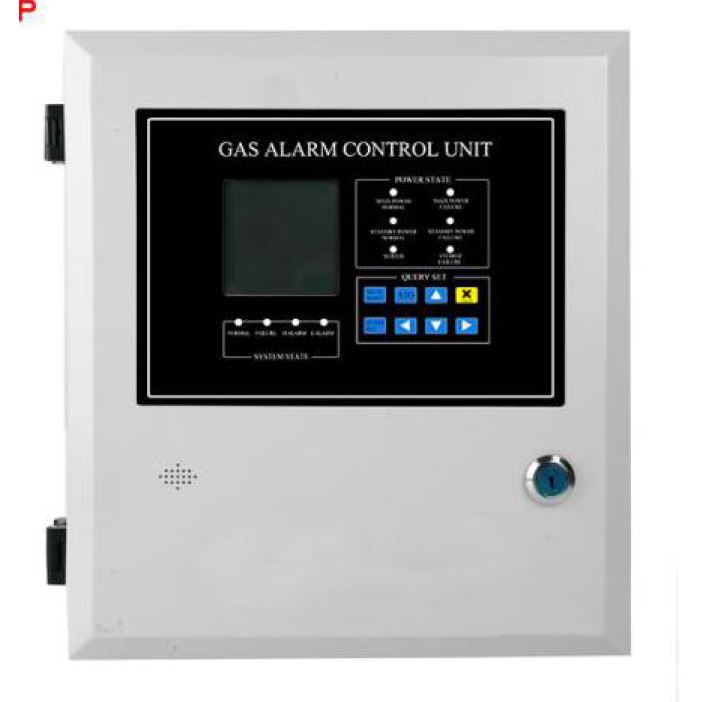
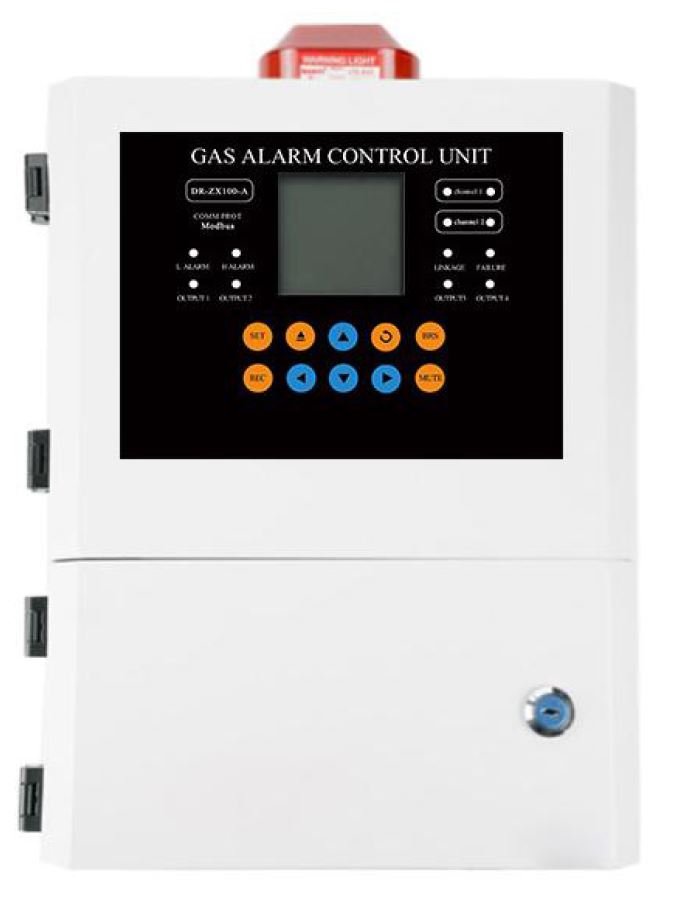
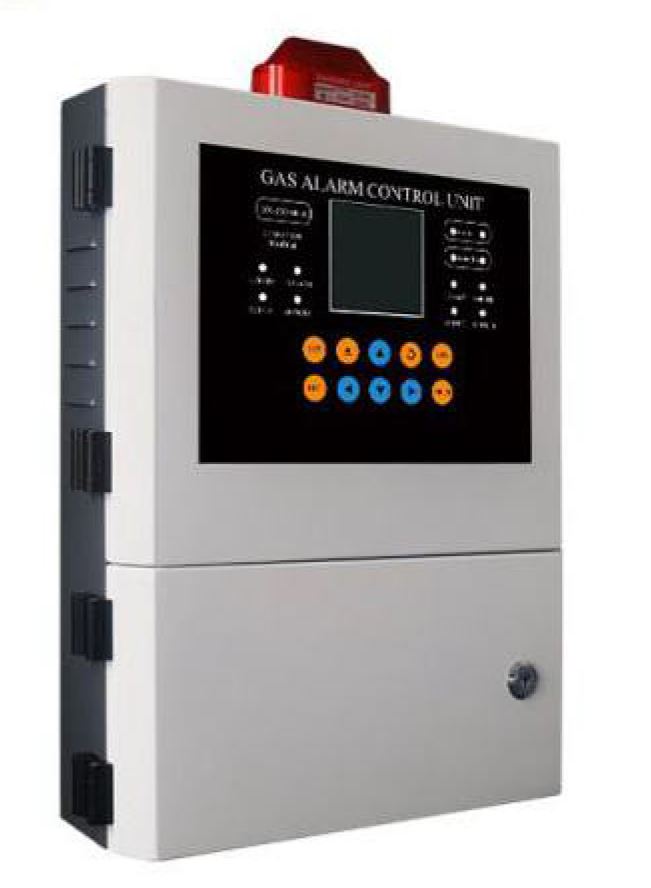

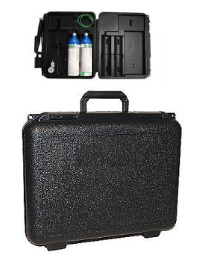
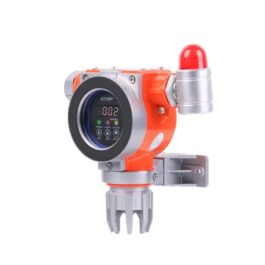
Reviews
There are no reviews yet.